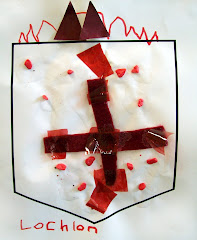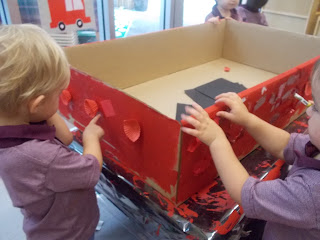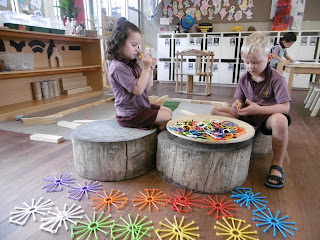Angry Children, Worried
Parents: Helping Families Manage Anger
Parents worry when their
children struggle with anger. Angry feelings and behaviour can be especially
challenging for children who have learning and attention problems. To help
parents address this problem, Dr. Sam Goldstein, Dr. Robert Brooks, and Sharon
Weiss, have teamed up to co-author a new book, Angry Children, Worried Parents:
Seven Steps to Help Families Manage Anger (Specialty Press, 2004). This practical
book presents a step-by-step program to help parents understand the causes of
anger in children and to design a program to help their children learn to
manage angry feelings and behaviour. The following is an excerpt from the book.
What is Anger?
We all become angry at times. Anger is a natural human emotion,
one of many responses we can express when we are frustrated and prevented from
reaching our goals. Since anger is a universal emotion, it seems logical to
conclude that there is nothing wrong with feeling angry. The problem occurs
when anger leads to inappropriate actions or behaviour. The problem, then, is
not being angry but dealing with angry feelings in an ineffective way.
Childhood experiences as well as inborn temperament powerfully
influence the way parents express anger and teach their children to manage
anger. How do you respond when you're angry? Do you become cynical or
overreact? Do you yell? Do you hit your children? How did your parents respond
to you when you were angry as a child? Did they punish you? Did they shame or
blame you? Do you have a tough time dealing with anger because your parents
didn't know how to deal with it?
We choose to view anger as a signal, an indication to the
individual that a goal or outcome is being blocked and that frustration is
building. How children �
or adults, for that matter �
learn to respond to this signal will determine ultimately whether they manage
anger or anger manages them. In response to anger, some blame others as the
source of their problems. They use anger as fuel to drive and justify what they
view as a necessary response. Yet anger is best viewed as a signal to take
action rather than a sign of being treated unfairly.
What Role Does Anger Play in Everyday Life?
Anger begins as an emotion of varying intensity. It can be
experienced as a mild irritation or as unbearable frustration. At the extreme
end, particularly for children who are impulsive or inflexible, anger often
leads to intense fury and rage. As with other emotions, anger is accompanied by
physical and biological changes in the body. Heart rate and blood pressure
increase. Levels of certain hormones, such as adrenaline, increase, leading to
other physical changes in the body.
Some researchers have suggested that aggression in response to
anger may be instinctual. They believe that anger may be a natural, adaptive
response to stress, allowing people to respond to a perceived threat and defend
themselves. Therefore, a certain amount of anger is likely necessary for
survival, even in our complex, civilized society. But when defence occurs in
the absence of true provocation, anger becomes a liability. It also becomes a
liability when we react verbally or physically in an extreme way to angry
feelings, when children are unable to modulate anger, or when problems occur at
home, on the playground, and in the classroom.
Teaching Anger Management
The goal of teaching children anger management is to reduce
excessive reactions when angry and to develop skills to use anger as a signal
to redirect their behaviour. As with learning to swim or ride a bicycle, as you
begin to work with your child it is important to be patient. Not all children
learn to swim in the first lesson or master riding a bicycle that first day.
Some children require much longer periods of practice to develop proficiency.
Keep in mind also that some children are born more likely to be
irritable and easily angered. These symptoms usually appear at an early age.
Yet, it is also important to remember that some children behave this way
because they live in households in which they are exposed to models of poor
anger management. Some children experience both risks, leading to a significant
probability that they will struggle to learn to manage anger effectively. Some
of these children may require professional help. The primary goal is to help
children and adolescents express anger in an assertive rather than aggressive
manner. This means they are neither pushy nor demanding, but learn to be
respectful advocates for themselves. This also means that they learn to cope
with, not simply suppress, their anger.
Suppression is only a partially effective strategy. When angry
feelings are suppressed they often emerge later on, usually in an excessive way
in response to a minor event related to an earlier anger-provoking experience.
Suppressed anger is also thought to contribute to passive-aggressive behaviour
such as getting back at people indirectly without telling them why or
confronting them directly. It also fuels cynical or hostile behaviour, leading
children to be excessively critical and fault-finding.
Anger Management Strategies
There are steps parents can take to help their children deal more
comfortably, effectively, and adaptively with anger. These interrelated steps
include:
- Serve
as appropriate models for your children. Remember
that children don't always do what we say. They are more often likely to
do what we do. Thus, a key component of teaching anger management is for
you, the adult, to manage anger and model effective anger coping
strategies for your children.
- Be
empathic. As you teach your children to
express anger constructively, place yourself in their shoes. Ask yourself
such questions as:
- "Am
I speaking to my children so they will learn from me rather than resent
me?"
- "Would
I want anyone to speak with me the way I am speaking with my
children?"
If we do not consider our children's perspective, we are likely to
say or do things that may actually work against helping our children learn to
deal constructively with anger.
- Involve
your child as much as possible in the process of dealing effectively with
anger. Even young children can be engaged in a discussion
that includes consideration of:
- what
makes us angry.
- what
are different options for dealing with anger.
- what
might be the consequence of each option, and
- what
option might be most effective.
When we enter into such a dialogue, we reinforce the belief in
children that they can learn to control anger rather than have anger control
them. This provides a sense of ownership, self-discipline, and resilience.
- Remember
the adage, "an ounce of prevention is worth a pound of cure."
Engage in prevention and "planned parenting." Notice when
certain situations are especially difficult or frustrating for your child
and prepare a "plan of action" in advance. For example, if your
child gets frustrated when going into a store, wishing to have every item
in sight, you can say before going in, "You can select one item. You
let me know which one you would like to have." If even this kind of
preparation does not work, it may be a signal that your child is not yet
ready to accompany you in the store. Or, if your child "fights"
about going to bed and you find yourself trying to cajole him for an hour,
it might be helpful to provide your child a sense of ownership and avoid a
struggle by saying, "Do you want me to remind you 10 minutes or 15
minutes before bedtime that it's time to get ready?" Prevention also
involves providing clear and realistic expectations, following a flexible
but predictable structure, and being consistent.
- Discipline
in a way that lessens frustration and anger and reinforces self-discipline.
All parents can become frustrated, at times, with their children, but when
parents respond to their children's anger by screaming, yelling, or
spanking, they are unintentionally reinforcing the very behaviours they
wish to stop. A parent who screams or spanks is communicating such
messages as: "We handle frustration through anger," or "As
long as I am bigger than you are, it's okay for me to shout and hit."
Parents who remain calm while disciplining, who have clear expectations,
who use realistic, natural, and logical consequences, and who remember
that discipline is a teaching process, will lessen outbursts of anger in
their children, while reinforcing self-control.
- Show
your children unconditional love and spend "special times" with
them. While these behaviours can be placed under the
heading of "prevention" (step Four), we believe that they are so
important they deserve their own section. When parents accept their
children and show them unconditional love, children are less likely to
become very frustrated or intensely angry. When parents spend time alone
with each of their children in such activities as playing with them,
reading to them at bedtime, going out for snack or to a game, they have
opportunities to develop a positive relationship. Such a relationship will
provide the foundation for teaching children self-discipline and assisting
them in managing frustration and anger constructively.
Conclusion
Even in the best functioning families, children may be angry at
times with parents. Parents may be angry with children and children may
experience anger regarding other issues or people outside of the home. The key
issue is how we choose to deal with our angry feelings as parents, and how
effective we are at helping our children develop strategies to learn to manage
anger. We believe that one of the most important tasks of parenting is to help
children become skilled at anger management.
Excerpted from Angry Children, Worried Parents by Sam
Goldstein, Ph.D., Robert Brooks, Ph.D., and Sharon K. Weiss,
M.Ed. Copyright © 2004 by Sam Goldstein, Robert Brooks, and Sharon K.
Weiss.
Excerpted by permission of Specialty Press, Inc.
All rights reserved. No part of this excerpt may be reproduced or
reprinted without permission in writing from the publisher.
Emma McKenzie
Teacher - Edgerley Room


















































